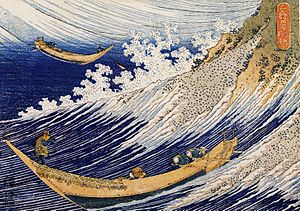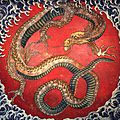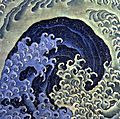Katsushika Hokusai facts for kids
Quick facts for kids
Hokusai (北斎 )
|
|
|---|---|
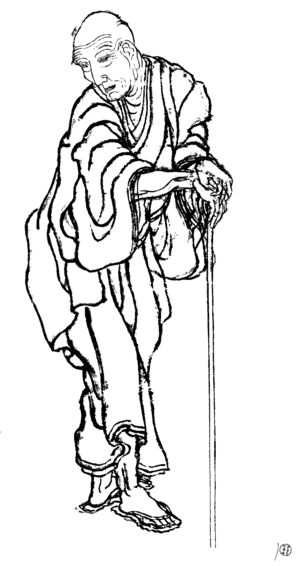
Katsushika Hokusai, in an 1839 self-portrait
|
|
| Born |
Tokitarō
時太郎 supposedly October 31, 1760 |
| Died | 10 May 1849 (aged 88) Edo (present-day Tokyo), Japan
|
| Nationality | Japanese |
| Known for | Ukiyo-e painting, manga and woodblock printing |
|
Notable work
|
The Great Wave off Kanagawa |
Katsushika Hokusai (born October 31, 1760 – died May 10, 1849) was a famous Japanese artist. He was a master of ukiyo-e painting and printmaking during Japan's Edo period. Hokusai was born in Edo, which is now the city of Tokyo.
He is best known for his amazing series of woodblock prints called Thirty-six Views of Mount Fuji. This series includes one of the most famous artworks in the world, The Great Wave off Kanagawa.
Hokusai created the Thirty-six Views because many people in Japan were starting to travel more. He also had a special interest in Mount Fuji. This series, especially The Great Wave and Fine Wind, Clear Morning, made Hokusai very famous in Japan and around the world.
Contents
Hokusai's Art and Inspiration
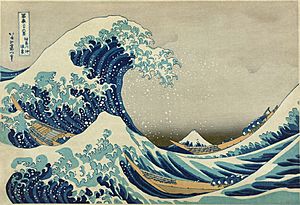
Hokusai had a very long career as an artist. However, he made most of his most important artworks after he turned 60 years old. His most popular work is the ukiyo-e series Thirty-six Views of Mount Fuji. He created these prints between 1826 and 1833.
The series actually has 46 prints in total. Ten more prints were added after the first ones were published.
More Famous Works
In 1834, Hokusai also created One Hundred Views of Mount Fuji. Many people think this is his best landscape picture book. Hokusai changed the art of ukiyo-e. Before him, it mostly showed actors and beautiful women. He made it about landscapes, plants, and animals instead.
Why Mount Fuji?
Hokusai's choice of art name and his frequent pictures of Mount Fuji came from his religious beliefs. The name Hokusai means "North Star Studio." Hokusai was part of a Buddhist group called Nichiren. This group believed the North Star was connected to a special god named Myōken.
Mount Fuji has long been linked to the idea of eternal life in Japan. This belief comes from an old story called The Tale of the Bamboo Cutter. In the story, a goddess leaves the elixir of life on the mountain's peak. So, Mount Fuji was seen as a source of immortality. This is why Hokusai was so interested in the mountain.
Hokusai Manga
One of Hokusai's biggest works is a 15-volume collection called Hokusai Manga. This book is full of almost 4,000 sketches. It was published in 1814.
These sketches are sometimes mistakenly thought to be like modern manga. However, Hokusai's Manga is a collection of drawings of animals, people, and objects. It is different from the story-based comic books we know as modern manga today.
Images for kids
-
Fine Wind, Clear Morning (or Red Fuji), from Thirty-six Views of Mount Fuji
-
Cover of Debussy's La Mer, 1905
-
Egrets from Quick Lessons in Simplified Drawing
See also
 In Spanish: Katsushika Hokusai para niños
In Spanish: Katsushika Hokusai para niños


